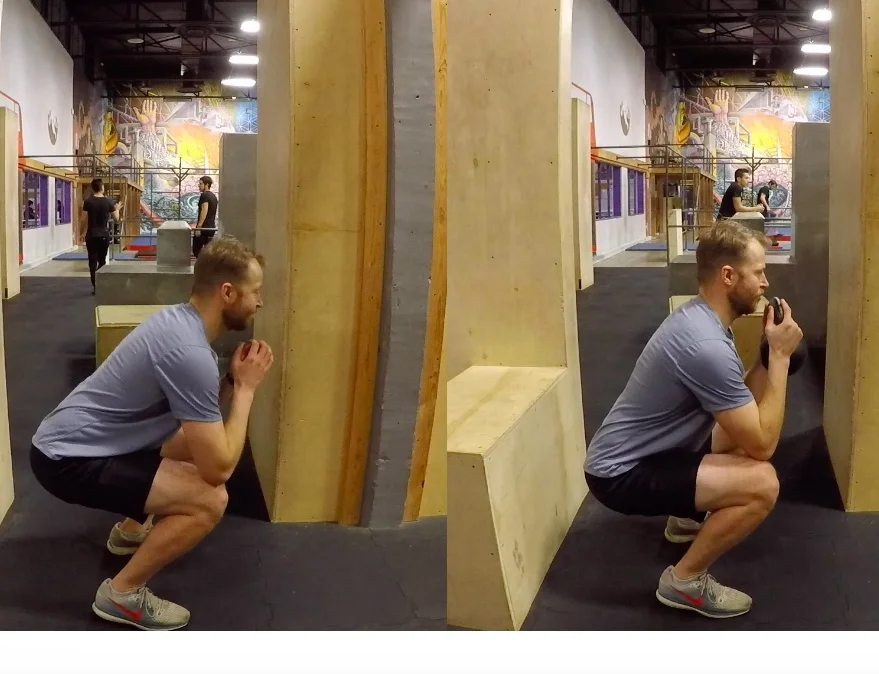Resistance for Assistance
Mobility is all the rage these days. The ability to get through a range of motion and apply that range of motion to the variability of tasks demanded in sport and everyday life. People train mobility a wide variety of ways, through holding stretches, stretches with movement , foam rolling, massage, vibrations plates the list goes on and on. One of the least appreciated methods is the use of weights.
in the following example we have an individual performing a body weight squat with no constraints, (the left screen) no limitation to all of the possibility of movement available. The form looks terrible. The hip rom, is limited, excursion of the knee is too much, and there a significant amount of trunk lean.
The left hand side shows bad form, the right had side demonstrates a cleaned up version of the squat.
Clearly there is a big difference in mobility and stability from the left to the right. The positioning of the ankle, knee, hip , and torso on the right hand side is a far better position than the left. Its important to note the key to obtaining this new position came from using a weight as a constraint. If the individual were to utilize a forward trunk lean as on the left with a weight, there would be a failure in the movement pattern and the individual would fall over. In this way the resistance acts as assistance to obtain the desired range of motion.

